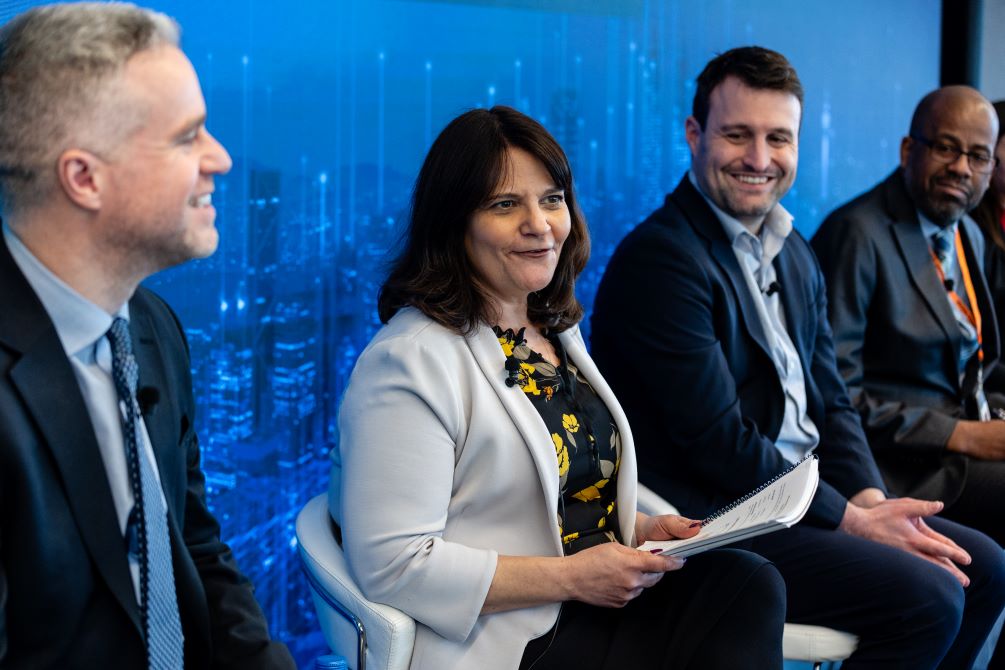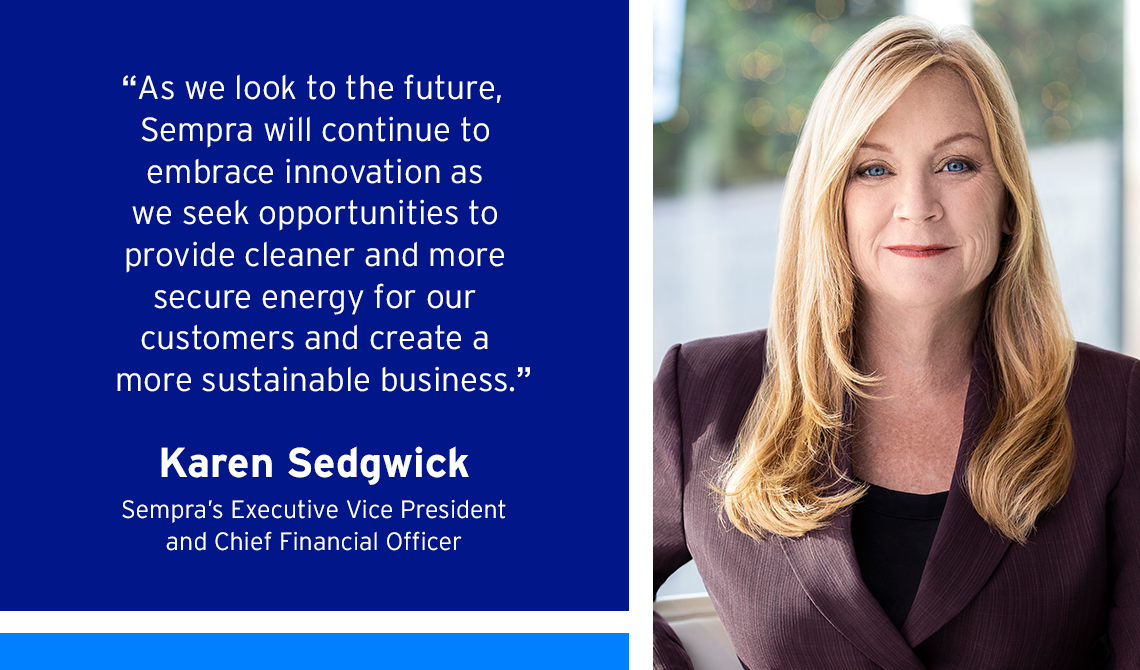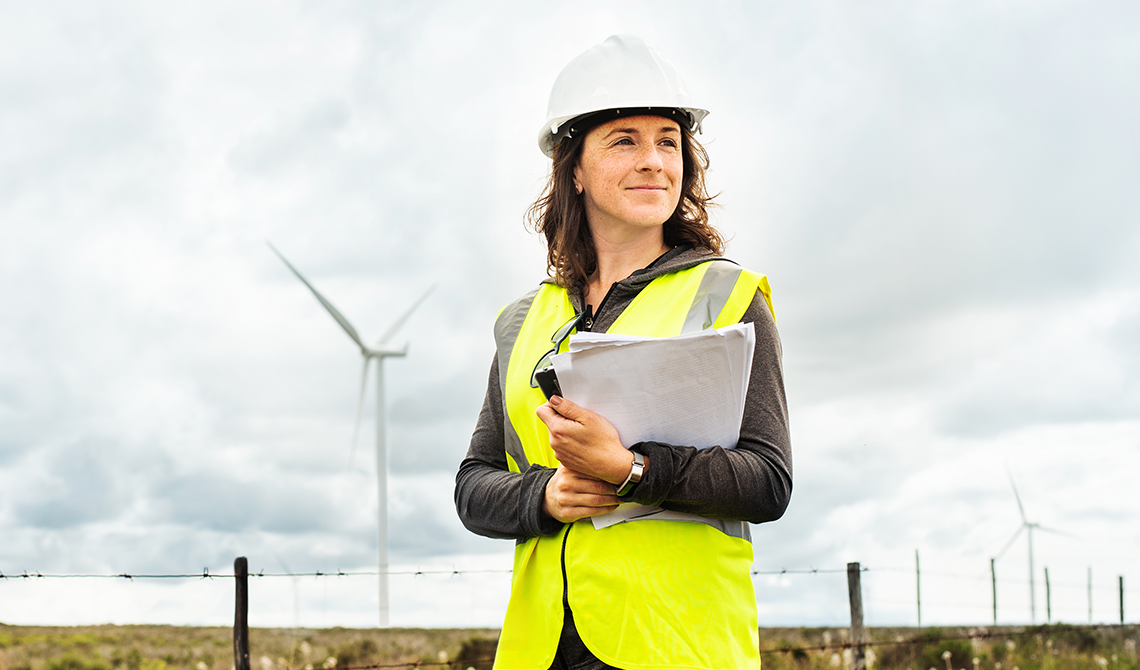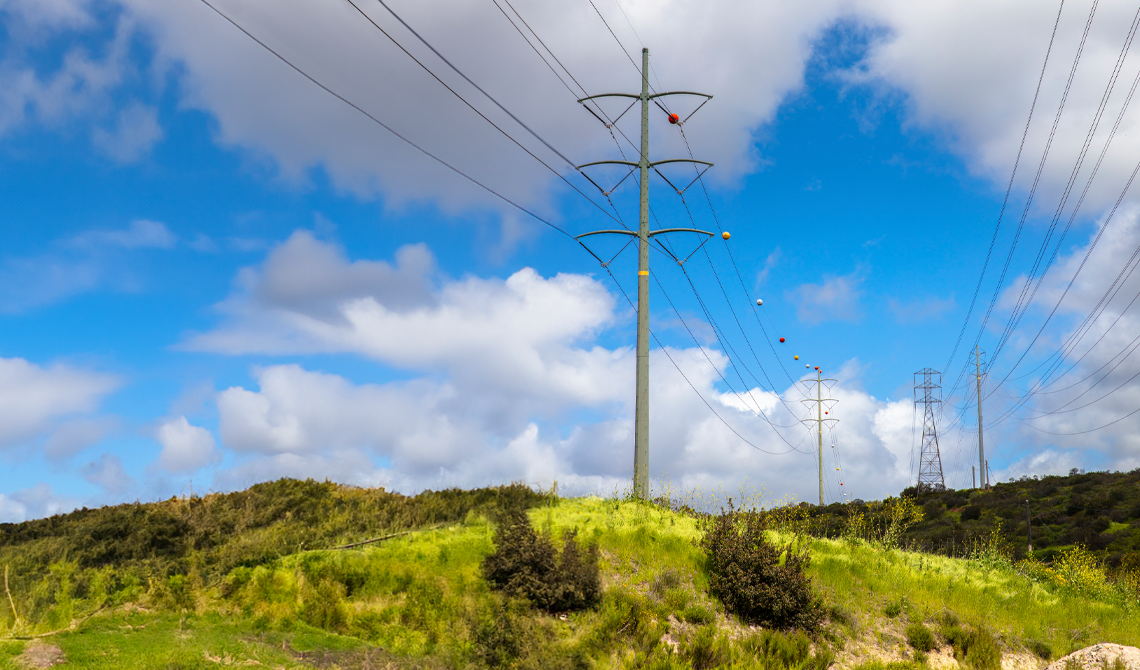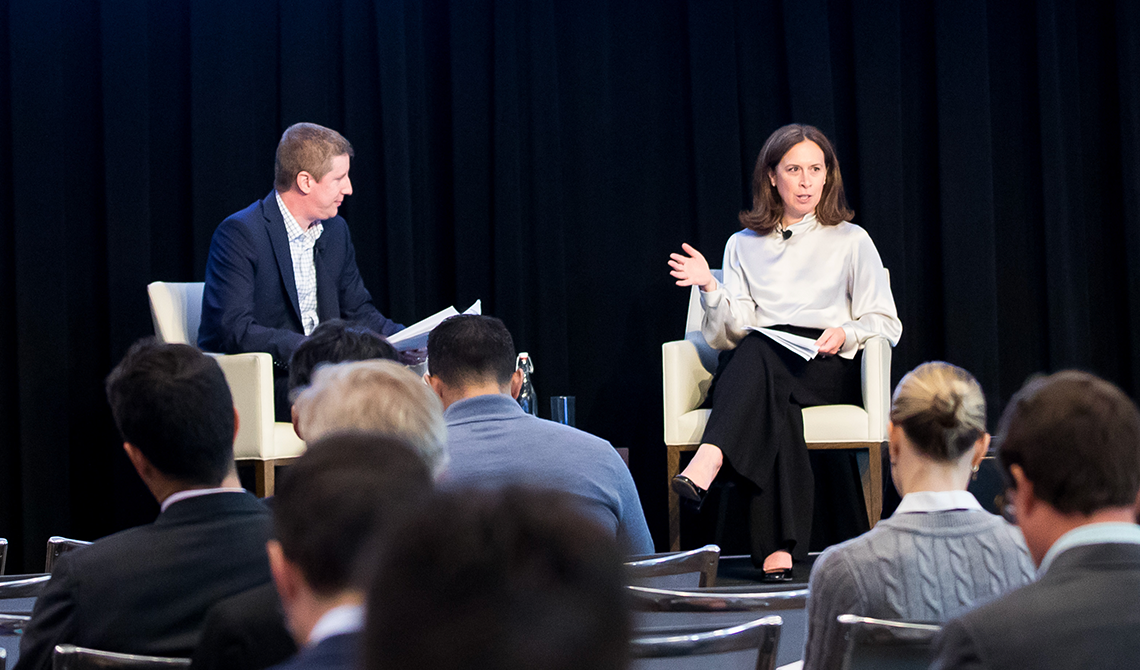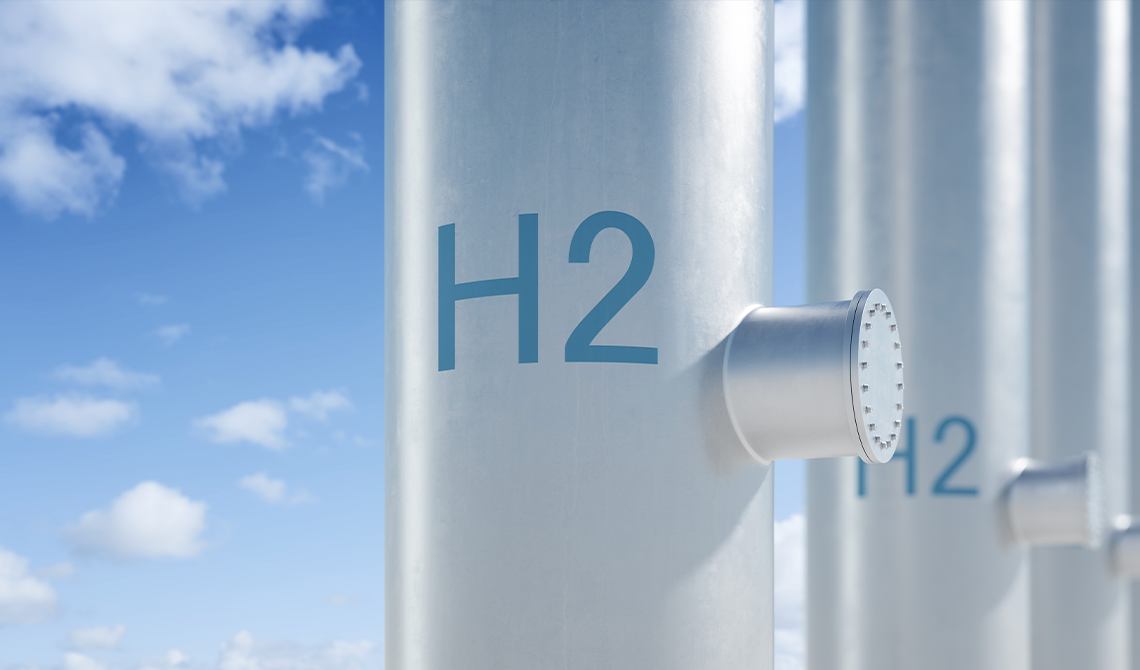International collaboration underpins a successful global transition to cleaner energy. Resources must be shared and investments made in import, export and cross-border infrastructure that benefit shared economies and communities. Amidst a backdrop of geopolitical uncertainty around the world, business and government leaders from the United States and Japan convened in Tokyo this fall to discuss shared commitments toward decarbonization and energy security and outline a collaborative path forward.
The U.S. Chamber of Commerce’s U.S.-Japan Business Council (USJBC) and the Japan-U.S. Business Council believe “the U.S. and Japan must be key players in navigating the world to a well-balanced future — decarbonizing the power sector and ensuring secure and stable energy supply.”
Trevor Mihalik, executive vice president and chief financial officer of Sempra, and Tania Ortiz Mena, president of Sempra Infrastructure, attended the USJBC 60th Annual Business Conference in Tokyo to address global energy challenges and share Sempra Infrastructure’s eagerness to serve the Japanese market for cleaner fuels.
Leading a lower carbon, more secure energy future
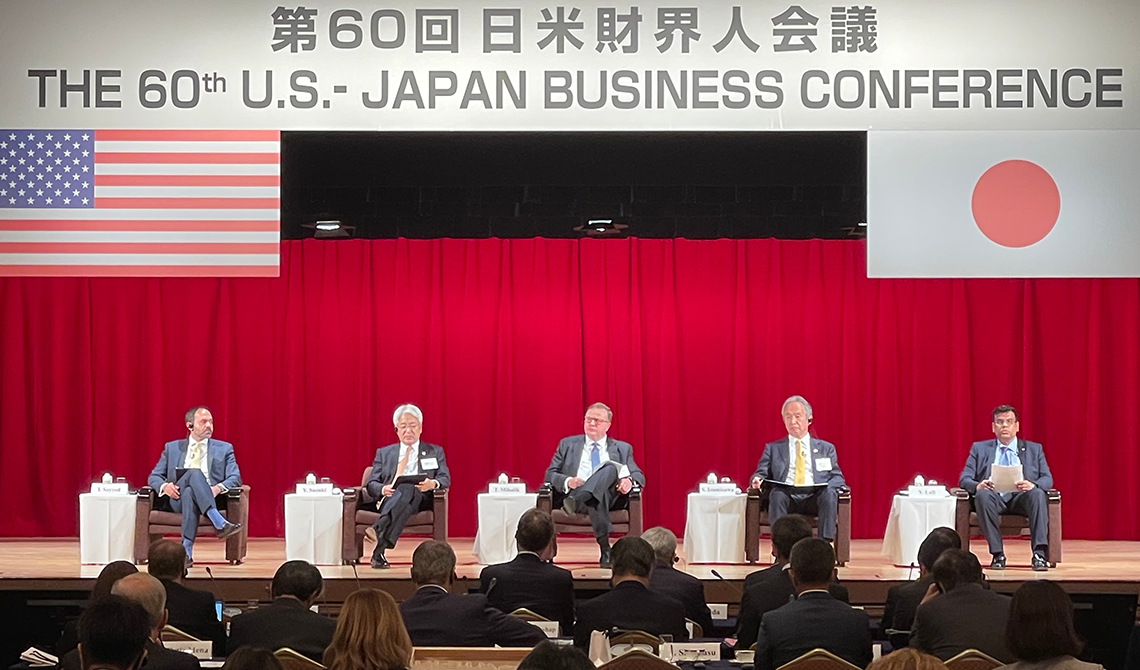 During the conference, Mihalik spoke about ReaCH4, a proposed project that is being evaluated through a consortium comprised of Sempra Infrastructure, Tokyo Gas Company, Ltd., Osaka Gas Company, Ltd., Toho Gas Company, Ltd. and Mitsubishi Corporation. The proposed project is envisioned to produce around 130,000 tonnes of e-natural gas per year in the Gulf Coast of the U.S., which would then be exported to support decarbonization goals in Japan. It could serve as the first link of an international supply chain of liquefied e-natural gas, a carbon neutral synthetic gas produced from renewable hydrogen and recycled carbon dioxide.
During the conference, Mihalik spoke about ReaCH4, a proposed project that is being evaluated through a consortium comprised of Sempra Infrastructure, Tokyo Gas Company, Ltd., Osaka Gas Company, Ltd., Toho Gas Company, Ltd. and Mitsubishi Corporation. The proposed project is envisioned to produce around 130,000 tonnes of e-natural gas per year in the Gulf Coast of the U.S., which would then be exported to support decarbonization goals in Japan. It could serve as the first link of an international supply chain of liquefied e-natural gas, a carbon neutral synthetic gas produced from renewable hydrogen and recycled carbon dioxide.
Additionally, Ortiz Mena was appointed to the board of directors for the USJBC and as the U.S. co-chair of the USJBC Energy and Infrastructure working group. With a professional career including more than 20 years in the Sempra family of companies, Ortiz Mena was recently named president of Sempra Infrastructure. In this role, Ortiz Mena leads the company’s three business lines: clean power, energy networks, and LNG and net-zero solutions.
"Given Japan’s heavy dependence on imported energy, the U.S.-Japan Business Council has shown great initiative in recognizing the value of energy to national security and its economic development,” Ortiz Mena said. “We are thrilled to help strengthen the Council’s work with our company’s deep experience, high-performing talent and versatility across sectors to help enable continued U.S.-Japan energy security cooperation and a cleaner energy future.”
Photo: A panel of participants on stage at the 60th U.S.-Japan Business Conference in 2023
A prosperous partnership
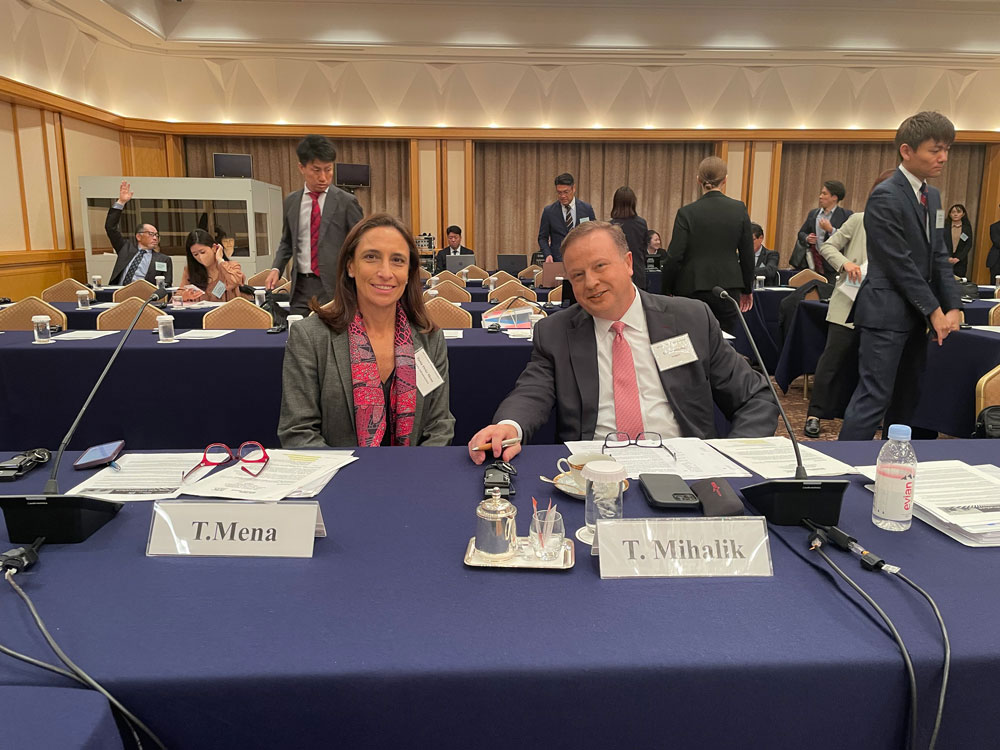 Japan is one of America’s strongest energy partners with shared interests in decarbonization and energy security, and a commitment to working together to advance a better future for all.
Japan is one of America’s strongest energy partners with shared interests in decarbonization and energy security, and a commitment to working together to advance a better future for all.
Over the past two years, the U.S. and Japan have signed five bi-lateral agreements solidifying the commitment of both countries to cooperate on clean energy and energy security. The ReaCH4 project embodies the goals of the U.S. Department of Energy and Japan’s Ministry of Energy, Trade and Industry’s Memorandum of Cooperation in the field of carbon capture, utilization and storage, conversion and recycling, and carbon dioxide removal.
In October 2022, the USJBC and the Japan-U.S. Business Council presented recommendations to the U.S. and Japanese governments with the request for a Japan-U.S. Energy Security Dialogue to be established. The first Dialogue was held December 2022 and the second one was held in October 2023 with Sempra Infrastructure participating in the meeting.
Sempra Infrastructure, Mitsui and Mitsubishi Corporation are partners in Cameron LNG, along with TotalEnergies and NYK (Nippon Yusen Kabushiki Kaisha). Phase 1 of the facility in Cameron Parish, Louisiana, is helping meet global demand for liquefied natural gas (LNG) with an export capacity of 12 million tonnes per annum (Mtpa). A fully permitted Phase 2 is currently under development to increase capacity by 6.75 Mtpa. The expansion would utilize electric drive motors, which is expected to improve the emissions profile of Phase 2 and to allow the facility to export additional lower-cost, secure, U.S. LNG to global markets.
The Cameron LNG partners are also exploring the development of Hackberry Carbon Sequestration. The proposed project, expected to be one of North America’s first carbon sequestration facilities, is being designed to advance the company’s net-zero solutions by producing cleaner liquefied natural gas for Cameron LNG and potentially other third-party customers. The carbon dioxide (CO2), transported by pipeline to a compression facility, would be permanently stored in a saline aquifer with a capacity of up to two million tonnes of CO2 per year.
The USJBC 60th Annual Business Conference confirmed the joint commitment of energy leaders in the U.S. and Japan to mutually pursuing decarbonization and energy security through smart infrastructure investments. By working together, ambitions could transform into reality.
Photo: Tania Ortiz Mena and Trevor Mihalik at the U.S.-Japan Business Conference in 2023
This article contains forward-looking statements within the meaning of the Private Securities Litigation Reform Act of 1995. Forward-looking statements are based on assumptions about the future, involve risks and uncertainties, and are not guarantees. Future results may differ materially from those expressed or implied in any forward-looking statement. These forward-looking statements represent our estimates and assumptions only as of the date of this article. We assume no obligation to update or revise any forward-looking statement as a result of new information, future events or otherwise.
In this article, forward-looking statements can be identified by words such as “believe,” “expect,” “intend,” “anticipate,” “contemplate,” “plan,” “estimate,” “project,” “forecast,” “should,” “could,” “would,” “will,” “confident,” “may,” “can,” “potential,” “possible,” “proposed,” “in process,” “construct,” “develop,” “opportunity,” “initiative,” “target,” “outlook,” “optimistic,” “poised,” “maintain,” “continue,” “progress,” “advance,” “goal,” “aim,” “commit,” or similar expressions, or when we discuss our guidance, priorities, strategy, goals, vision, mission, opportunities, projections, intentions or expectations.
Factors, among others, that could cause actual results and events to differ materially from those expressed or implied in any forward-looking statement include: California wildfires, including potential liability for damages regardless of fault and any inability to recover all or a substantial portion of costs from insurance, the wildfire fund established by California Assembly Bill 1054, rates from customers or a combination thereof; decisions, investigations, inquiries, regulations, denials or revocations of permits, consents, approvals or other authorizations, renewals of franchises, and other actions by the (i) California Public Utilities Commission (CPUC), Comisión Reguladora de Energía, U.S. Department of Energy, U.S. Federal Energy Regulatory Commission, Public Utility Commission of Texas, U.S. Internal Revenue Service and other governmental and regulatory bodies and (ii) U.S., Mexico and states, counties, cities and other jurisdictions therein and in other countries where we do business; the success of business development efforts, construction projects, acquisitions, divestitures and other significant transactions, including risks in (i) being able to make a final investment decision, (ii) completing construction projects or other transactions on schedule and budget, (iii) realizing anticipated benefits from any of these efforts if completed, and (iv) obtaining third-party consents and approvals; macroeconomic trends or other factors that could change our capital expenditure plans and their potential impact on rate base or other growth; litigation, arbitrations, property disputes and other proceedings, and changes to laws and regulations, including those related to tax and trade policy and the energy industry in Mexico; cybersecurity threats, including by state and state-sponsored actors, of ransomware or other attacks on our systems or the systems of third parties with which we conduct business, including the energy grid or other energy infrastructure, all of which continue to become more pronounced; the availability, uses, sufficiency, and cost of capital resources and our ability to borrow money or otherwise raise capital on favorable terms and meet our obligations, including due to (i) actions by credit rating agencies to downgrade our credit ratings or place those ratings on negative outlook, (ii) instability in the capital markets, or (iii) rising interest rates and inflation; failure of foreign governments, state-owned entities and our counterparties to honor their contracts and commitments; the impact on affordability of San Diego Gas & Electric Company’s (SDG&E) and Southern California Gas Company’s (SoCalGas) customer rates and their cost of capital and on SDG&E’s, SoCalGas’ and Sempra Infrastructure’s ability to pass through higher costs to customers due to (i) volatility in inflation, interest rates and commodity prices, (ii) with respect to SDG&E’s and SoCalGas’ businesses, the cost of the clean energy transition in California, and (iii) with respect to Sempra Infrastructure’s business, volatility in foreign currency exchange rates; the impact of climate and sustainability policies, laws, rules, regulations, disclosures and trends, including actions to reduce or eliminate reliance on natural gas, increased uncertainty in the political or regulatory environment for California natural gas distribution companies, the risk of nonrecovery for stranded assets, and our ability to incorporate new technologies; weather, natural disasters, pandemics, accidents, equipment failures, explosions, terrorism, information system outages or other events that disrupt our operations, damage our facilities or systems, cause the release of harmful materials or fires or subject us to liability for damages, fines and penalties, some of which may not be recoverable through regulatory mechanisms or insurance or may impact our ability to obtain satisfactory levels of affordable insurance; the availability of electric power, natural gas and natural gas storage capacity, including disruptions caused by failures in the transmission grid, pipeline system or limitations on the withdrawal of natural gas from storage facilities; Oncor Electric Delivery Company LLC’s (Oncor) ability to reduce or eliminate its quarterly dividends due to regulatory and governance requirements and commitments, including by actions of Oncor’s independent directors or a minority member director; and other uncertainties, some of which are difficult to predict and beyond our control.
These risks and uncertainties are further discussed in the reports that Sempra has filed with the U.S. Securities and Exchange Commission (SEC). These reports are available through the EDGAR system free-of-charge on the SEC’s website, www.sec.gov, and on Sempra’s website. Investors should not rely unduly on any forward-looking statements.
Sempra Infrastructure, Sempra Infrastructure Partners, Sempra Texas, Sempra Texas Utilities, Oncor and Infraestructura Energética Nova, S.A.P.I. de C.V. (IEnova) are not the same companies as the California utilities, SDG&E or SoCalGas, and Sempra Infrastructure, Sempra Infrastructure Partners, Sempra Texas, Sempra Texas Utilities, Oncor and IEnova are not regulated by the CPUC.
